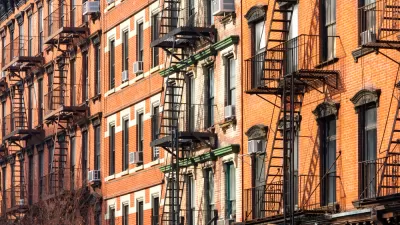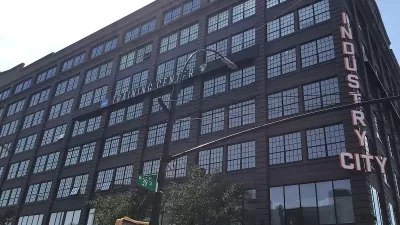The neighborhood of Chelsea in Manhattan, location of the High Line and one of the hottest real estate markets in the city, provides a case study of the wealth gap, with each side living in close proximity.
"Census and city figures show that the average household income in Chelsea, about $140,000, is almost five times the average for households in public housing in the area," according to Mireya Navarro. "The neighborhood now ranks among those in the city with the greatest income inequality, according to the Furman Center for Real Estate and Urban Policy at New York University, as the share of households in the highest income brackets — over $250,000 — has grown."
The article notes the ongoing tension behind two housing initiatives moving forward under the direction of Mayor Bill de Blasio: the upzoning of East New York and a proposal to build new housing on properties controlled by the New York City Housing Authority. Both of those proposals have sparked concerns among residents that they will be displaced by rising costs connected with new developments. Navarri cites Chelsea's example for some perspective on the current controversy affecting those parts of the city.
"In long-gentrified Chelsea, the worst fears have yet to come true. The housing projects — Fulton Houses (between 16th and 19th Streets and Ninth and 10th Avenues) and the neighboring Elliot and Chelsea Houses (in the mid-20s) — with about 2,000 apartments combined, are still there, as they have been since the 1940s (Elliot) and ’60s (Fulton and Chelsea). The brick buildings have deteriorated, however, under the weight of time and as the Housing Authority’s maintenance budget has fallen short, although city officials say they remain committed to preserving public housing."
The article goes onto describe how the dichotomy of income levels impacts the people on the low end of the spectrum—citing some examples of how policy neglects the block-by-block discrepancies of neighborhoods like Chelsea when data is only considered at the ZIP Code level.
FULL STORY: In Chelsea, a Great Wealth Divide

Alabama: Trump Terminates Settlements for Black Communities Harmed By Raw Sewage
Trump deemed the landmark civil rights agreement “illegal DEI and environmental justice policy.”

Study: Maui’s Plan to Convert Vacation Rentals to Long-Term Housing Could Cause Nearly $1 Billion Economic Loss
The plan would reduce visitor accommodation by 25% resulting in 1,900 jobs lost.

Planetizen Federal Action Tracker
A weekly monitor of how Trump’s orders and actions are impacting planners and planning in America.

Wind Energy on the Rise Despite Federal Policy Reversal
The Trump administration is revoking federal support for renewable energy, but demand for new projects continues unabated.

Passengers Flock to Caltrain After Electrification
The new electric trains are running faster and more reliably, leading to strong ridership growth on the Bay Area rail system.

Texas Churches Rally Behind ‘Yes in God’s Back Yard’ Legislation
Religious leaders want the state to reduce zoning regulations to streamline leasing church-owned land to housing developers.
Urban Design for Planners 1: Software Tools
This six-course series explores essential urban design concepts using open source software and equips planners with the tools they need to participate fully in the urban design process.
Planning for Universal Design
Learn the tools for implementing Universal Design in planning regulations.
Caltrans
Smith Gee Studio
Institute for Housing and Urban Development Studies (IHS)
City of Grandview
Harvard GSD Executive Education
Toledo-Lucas County Plan Commissions
Salt Lake City
NYU Wagner Graduate School of Public Service




























